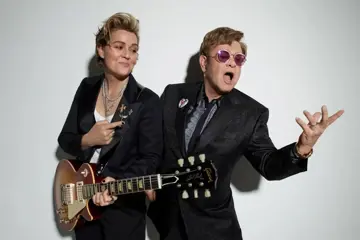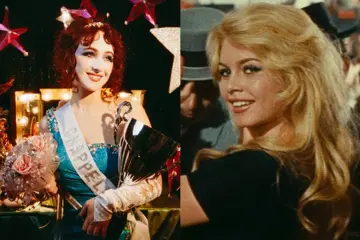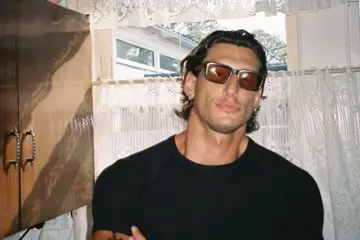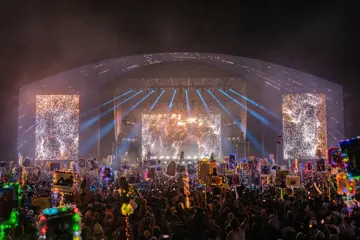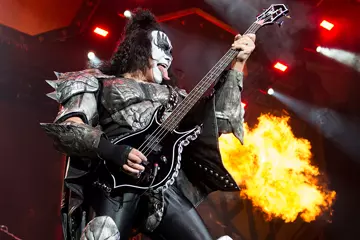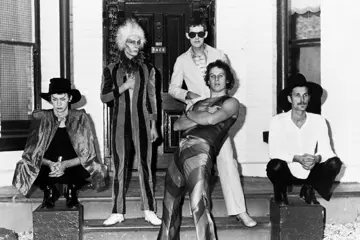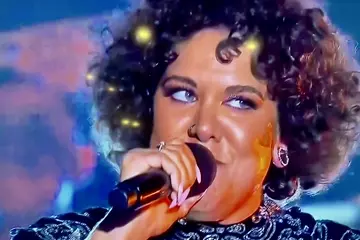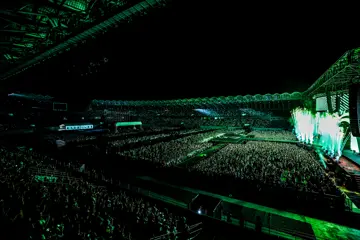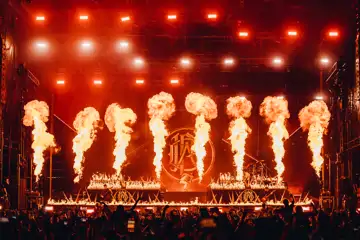spider-man: homecoming
It’s the eternal dilemma for Spider-man, the eternal teenager of comic-books: save the day, or take that Spanish quiz? Swinging from skyscrapers is swell, but sometimes, you get stuck in detention. A third-time-this-century reboot of Spider-man seems plenty redundant, but, being reborn in the MCU allows Spider-man: Homecoming to take the character back to his adolescent roots. Here, Peter Parker has radioactive blood, but he’s still a 15-year-old dork, stuck in high-school. And, in turn, Homecoming plays as a teen-movie. With only occasional outbursts of costumed fighting, CGI spectacle-making, and Iron Man.
Its title pulls winking double duty: referring both to Spider-man’s ‘return’ to the cinematic realm of Marvel, and to the big school dance that comes near its finale. The theme of the homecoming dance is ’80s Prom, which makes for another moment where director Jon Watts and the six(!) screenwriters are making reference to classic John Hughes teen-movies. The highlight of which is a riff on, and open homage to, the running-through-the-backyards sequence from Ferris Bueller’s Day Off.
One of those six screenwriters —and one with an additional ‘story by’ credit— is John Francis Daley; known, once, years ago, as Sam Weir in the classic teen-comedy Freaks & Geeks. It’s no huge surprise to find a McKinley alumnus behind-the-scenes in the MCU, given Apatow’s band of wonky kids have long since graduated to running Hollywood. But, blessedly, Daley actually brings some of the spirit of Freaks & Geeks to the film: Tom Holland, the titular hero, is a put-upon nerd who builds Star Wars models with his wonky best pal Jacob Batolon; Zendaya’s existential mathlete-rebel is inspired by F&G heroine Lindsay Weir; and Martin motherfuckin’ Starr plays a bearded teacher in charge of the ‘team’ for the Academic Decathlon.
There’s just as much drama made from harbouring a crush, dealing with a bully, or showing up to your first cool house-party as there is from catching thieves just like flies. The recurring theme is that, following his breakout performance in the climactic battle in Berlin from Captain America: Civil War, Holland thinks he’s ready for the big-time, ready to graduate from Friendly Neighbourhood Spider-man to full-blown Avenger. In this, Robert Downey Jr’s Tony Stark becomes the father figure Parker has been missing; and, in keeping with the character, RDJ offers a meta-commentary on how he’s playing the father figure as he goes.
Don't miss a beat with our FREE daily newsletter
The absence of a father figure keys into another important point: Homecoming is not a full reboot, in that we don’t have to suffer through another origin story. There’s no radioactive spider, no discovery of new powers, no slow-motion death of Uncle Ben. As in Civil War, Marisa Tomei returns as an undeniably-hot Aunt May; the complaints of her casting, heard loudly last time around, perhaps the sole time in Hollywood history that a 50-something actress has been deemed ‘too young’ for a role.
There’s recurring gags made about Tomei’s hotness; but, then again, there’s recurring gags made about everything. Spider-man: Homecoming is more comedy than super-hero movie. A cameo-ing Chris Evans is hilarious. The school’s various teachers are disinterested, clueless, hopeless. Donald Glover has ice-cream in the trunk. There’s an in-the-boy’s-toilets joke that lingers long, and uncomfortable, displaying fine comic timing. And the MCU itself —The Avengers: Kill/Fuck/Marry?; the smell of the Incredible Hulk; Chris Hemsworth’s Valhalla-by-way-of-Australia accent— is fodder for comic riffs.
The easy, breezy, fun-and-funny tone is matched to one of the most pleasing villains in comic-book-movie history. He’s the first character we meet: a small-time salvage-crew boss who’s taken off the post-Avengers clean-up of New York City by government heavies. A working-class guy with a family to feed, he smuggles out some leftover alien tech, and spends the next decade dealing it on the black market, whilst building himself a sweet winged suit and some high-tech gadgets. He’s not a sociopath or mad scientist, he’s not out to take over the world or take down Tony Stark, he’s not even particularly villainous. He’s also, gladly, played by Michael Keaton, whose Batman-to-Birdman history adds resonance to the role, and whose recent turn as McDonald’s kingpin Ray Kroc, in The Founder, isn’t far from what he’s doing here. Keaton underplays things, makes his menace intimate, his actions always seeming, in their own way, to be essentially reasonable.
This all means that, come the climax of Spider-man, there’s no generic blockbuster apocalypse; no one lifting a whole fucking country into space, no skyscrapers being wiped out by two macho middle-aged men having a fistfight, no ticking-clock countdown to a doomsday-level event thwarted at the buzzer. There’s no contrived emotions, no generic tragedy, no desperate grandstanding for some grand theme of ‘family’ or ‘brotherhood’, no implicit advertisements for US military forces and/or their international interventionism. In short, it’s an MCU instalment that’s just as commendable for what it’s not as for what it is.
okja
Okja opens with, essentially, an infomercial: an animated corporate showreel —narrated by Tilda Swinton’s platinum-haired, white-dentured, gaily bright CEO— in which agri-business playing-God-ism is rendered as family-friendly cartoon. It’s GMO turned OMG: a host of Vine-able “little piggies” being sent out into the world to be raised by farmers competing to win a Best In Show prize. They’re a “revolution in the livestock industry”, a copyrighted entity being sold as Super-Pigs.
In truth, they’re giants: floppy-eared puppies the size of a hippo. And, “far from New York”, we see one of the puppies having grown into Man’s Best Friend. His name is Okja, and he’s been the lifelong companion for the orphaned Ahn Seo-hyun, who lives in bucolic mountainous splendour —all waterfalls and rockpools, blue waters and verdant forest— with her grandfather. Like real-life pigs, Okja is intelligent, sentient, emotional. And destined to be turned into food.
When the corporate owners of this livestock flesh come calling, what enfolds is an eco action-movie, in which the titular beast —like the monster in a monster-movie— becomes a symbol for various competing parties. To Swinton and her boardrooms of execs, Okja is a PR-opp, a way of swaying consumers towards swallowing peddled genetic abnormality. To Jake Gyllenhaal’s drunken, wacky, helium-voiced TV-personality, the super-pig’s a way of propping up his flagging career. To the members of the Animal Liberation Front —the monastically principled Paul Dano, crimson-haired Lily Collins, translationally-challenged Steven Yuen— he represents their war against genetic-tampering and industrialised slaughterhouses. But, to Ahn, Okja is just her best friend.
The sixth flick for Bong Joon-ho is, like so many of the Korean filmmaker’s works, a strange mix of genre movie, quirky comedy, dark social parable, and colourful fable. It’s also his most accessible film, and maybe his best. His first English-language feature, 2013’s Snowpiercer, survived a tangle with Harvey ‘Scissorhands’ Weinstein, earnt a cult following, and, evidently, killed it on digital services. What else could explain the unprecedented event of streaming behemoth Netflix handing Bong US$50mil and complete creative control?
What results is an idiosyncratic auteur’s vision that has a Spielbergian sense of cinematic spectacle and wide-eyed wonder. Okja marries the familial warmth and goonball humour of Bong’s past monster-movie, 2006’s The Host, with the action-movie grandeur he tackled with Snowpiercer. It’s a big film with a starry cast and a strong sense of itself, and, ultimately, it feels like the first instance of real ‘event cinema’ debuting on a streaming service.
Whilst controversy erupted when Okja premiered at the Cannes Film Festival, even die-hard cineastes will find it hard to lament the Great Movie-Biz Seachange when presented with something so singular, so enjoyable, so masterful. It’d be a delight to watch Okja on a big screen rather than a small one, sure. But, Bong having been handed free-rein over his film is its own victory for cinema; his audacious directorial vision existing in opposition to the craven committee-thinking and IP-milking that currently defines Hollywood.
THE VILLAINESS

The Villainess opens with a bang: director Jung Byung-gil paying elaborate, blood-splattered homage to the infamous Oldboy fight scene, with a new visual twist. Here, the monomaniacal vigilante hacking their way through a one-shot hall is Kim Ok-bin’s titular assassin, a badass dame with a grudge. And, instead of going down the hallway in cutaway, taking on incoming bad-guys like in a side-scrolling video-game, here we see the frenetic, disorienting action from her perspective. It’s an audacious, delirious, ridiculous beginning: a stitched-together single-take that plays like an instant action-movie classic; one-upping the past visions of Park Chan-wook —or, even, Bong Joon-ho in Snowpiercer— with a thrown gauntlet.
This beginning isn’t the only evocation of Park’s Vengeance Trilogy in The Villainess, nor even the film’s most explicit act of homage, given how liberally Jung cribs from Kill Bill, borrowing from Quentin Tarantino, the greatest borrower in cinema history. But Jung’s open evocations of evidently-formative early-’00s action-movie moves don’t come with a sense of bookish learning, or playful postmodernism. The reference is neither nerdy nor meta. Instead, Jung uses them as a springboard, verily leaping into a host of other gymnastically-limber, borderline-demented, breathlessly-edited action sequences: Kim not just taking on a procession of goons, but leaping off rooftops and onto the back of buses, riding motorcycles and swinging blades as the GoPros are hurled into and out of the fray.
The story is a riff on La Femme Nikita and Kill Bill, with lengthy, chronologically-shuffled flashbacks filling in who Kim is, why she’s out for revenge, and how she came to be a murderous machine. After an off-the-grid, ragamuffin-orphan childhood of being taught killing skills by various crims —all equal parts father-figure and sexual predator— Kim becomes the star pupil in a clandestine school for trained assassins; which comes populated with varied rivals/friends out of the high-school-in-movies rulebook.
Eventually, she ‘graduates’ to a life in the real world, posing as an actress; leading to many evocations of the world being a stage, everyone acting, and playing parts. She eventually shacks up with Sung-joon, a hidden killing-school overseer who falls for her after watching her via hidden cameras; which speaks to the film’s other great theme, of layers of surveillance, and who’s-watching-the-watchers. Most of the great revelations come via recording devices, and, when Kim has been driven to the brink, near climax, she symbolically shoots up a bank of CCTV monitors.
Of course, none of the writing comes anywhere close to measuring up to the action. And, indeed, when Jung and co-writer Jung Byeong-sik go earnestly searching for emotional resonance —cue the tender acoustic-guitar pluckings!— many viewers will wonder why a film that started so bonkers has grown so sentimental. Whilst the overwrought psychodrama and grandstanding emotion can sometimes tip into being amusing, mostly the suddenly-slowed second-act just gives you time to wonder just how many of the cast have had extensive plastic-surgery. Gladly, the ridiculous, blood-spraying, camera-hurtling, eye-rattling action eventually returns, building to a wild ending that’s filled not with homage to Oldboy, but —in a neat bit of narrative flat-circling— to The Villainess’s own beginning.



